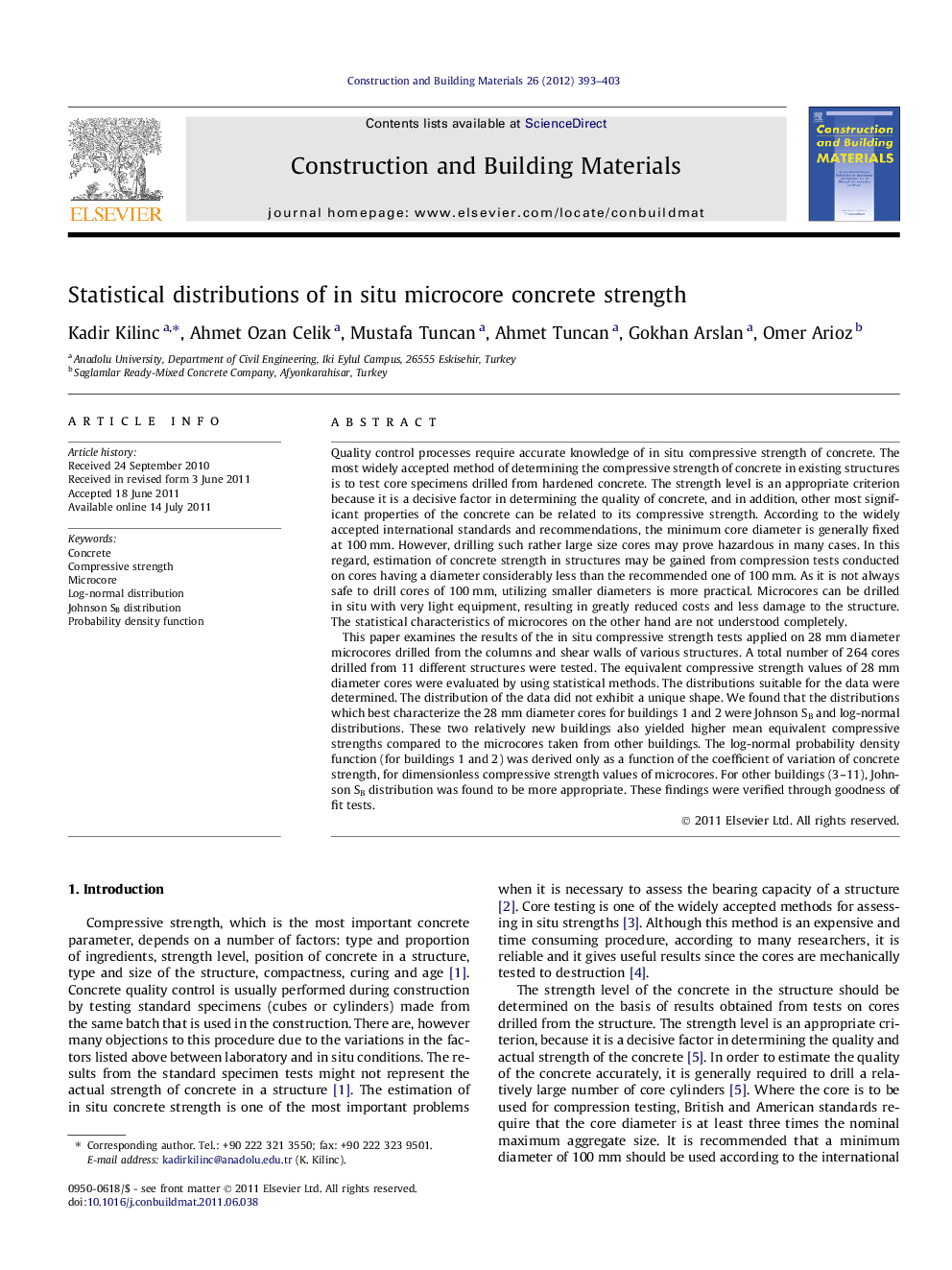| کد مقاله | کد نشریه | سال انتشار | مقاله انگلیسی | نسخه تمام متن |
|---|---|---|---|---|
| 259169 | 503628 | 2012 | 11 صفحه PDF | دانلود رایگان |

Quality control processes require accurate knowledge of in situ compressive strength of concrete. The most widely accepted method of determining the compressive strength of concrete in existing structures is to test core specimens drilled from hardened concrete. The strength level is an appropriate criterion because it is a decisive factor in determining the quality of concrete, and in addition, other most significant properties of the concrete can be related to its compressive strength. According to the widely accepted international standards and recommendations, the minimum core diameter is generally fixed at 100 mm. However, drilling such rather large size cores may prove hazardous in many cases. In this regard, estimation of concrete strength in structures may be gained from compression tests conducted on cores having a diameter considerably less than the recommended one of 100 mm. As it is not always safe to drill cores of 100 mm, utilizing smaller diameters is more practical. Microcores can be drilled in situ with very light equipment, resulting in greatly reduced costs and less damage to the structure. The statistical characteristics of microcores on the other hand are not understood completely.This paper examines the results of the in situ compressive strength tests applied on 28 mm diameter microcores drilled from the columns and shear walls of various structures. A total number of 264 cores drilled from 11 different structures were tested. The equivalent compressive strength values of 28 mm diameter cores were evaluated by using statistical methods. The distributions suitable for the data were determined. The distribution of the data did not exhibit a unique shape. We found that the distributions which best characterize the 28 mm diameter cores for buildings 1 and 2 were Johnson SB and log-normal distributions. These two relatively new buildings also yielded higher mean equivalent compressive strengths compared to the microcores taken from other buildings. The log-normal probability density function (for buildings 1 and 2) was derived only as a function of the coefficient of variation of concrete strength, for dimensionless compressive strength values of microcores. For other buildings (3–11), Johnson SB distribution was found to be more appropriate. These findings were verified through goodness of fit tests.
► No unique shaped distribution is recognized that characterizes entire data.
► The distributions for data from buildings 1 and 2 were Johnson SB and log-normal distributions.
► For other buildings, it was Johnson SB distribution.
► The log-normal probability density function is derived only as a function of the coefficient of variation for microcores.
► Johnson SB distribution is a powerful tool for describing data that shows variability from building to building.
Journal: Construction and Building Materials - Volume 26, Issue 1, January 2012, Pages 393–403